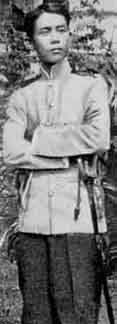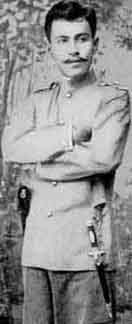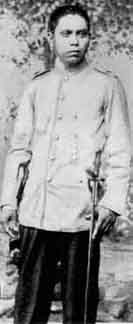


The ancient Filipinos built high-speed warships called the "Kora-Kora" for attacks against neighboring states. Ancient Filipinos from the Central Philippines known as the Visayans were infamous for this. The Visayans, also called the "Pintados" or "Tattoed People" by the Spaniards were known to launch amphibious attacks using fleets of "Kora-Koras" against the southern provinces of China. The "Kora-Kora"(called the "Corcoa" by the Spaniards) was a fast ship for its time capable of making 15 knots easily out-racing the Spanish galleons which could only do 6 knots. The Kora-Kora could carry as many as 200 warriors and up to six(6) "Lantakas"(cannons). The high speed of the "Kora-Kora" warship was one reason the Southern Filipino Muslims(Moros) were able to successfully fight off the Spanish invaders. The Moros periodically launched amphibious attacks against Spanish forts using hundreds of "Kora-Koras" carrying thousands of warriors.
The Philippine Navy had its beginnings during the 1896 revolution against the Spaniards. The leader of the revolution, El Presidente Emilio Aguinaldo issued a Presidential decree proclaiming the "Revolutionary Navy". President Aguinaldo appointed Senor Pascual V. Ledesma, a merchant marine master, the Director of the Navy with the rank of General.
The revolutionary navy was initially formed around ships donated by patriotic Filipinos as well as captured Spanish Navy ships. The Philippine Navy started on May 20, 1898 when the Filipino flag was hoisted on one of this ships. One of the officers of the Filipino Navy was Senor Vicente Catalan, a Cuban-Spaniard sympathetic to the Philippine revolution. He was also known as "Admiral of the Philippine Navy". In July 5,1898, Admiral Catalan with his Filipino sailors helped seize Subic Bay.



When the United States allowed the Philippines some form of self-government as a commonwealth on November 15, 1935, Commonwealth Act No. 1 was issued also known as the "National Defense Act". This act provided for a Philippine Army with a naval component known as the "Off-Shore Patrol". This naval force also known as the "Mosquito Fleet" was composed of three(3) motor torpedo boats namely- Luzon(Q111), Abra(Q-112) and Agusan(Q-113).
One of the Torpedo boats measured 65 feet long and 13.5 feet wide and were powered by three(3) British Thornycroft 12 cylinder engines giving it a top speed of 41 knots. The other boats were 55 feet long by 11 feet wide. Each boat carried two(2) eighteen(18) inch torpedos, two(2) machine-guns and depth charges.
The men of the Off-shore Patrol performed heroically against the invading Japanese Navy and Air Force that about 60 percent of their men were awarded the "Distinguished Service Cross" by General Douglas McArthur.
Renamed the "Philippine Naval Patrol" in October 1947, it was expanded and became a major service of the Armed Forces of the Philippines so that on January 5,1951, it was given its final name-the Philippine Navy with expanded objectives and resources.
Notes: Fookien Times Philippines 1983-1984, Editor Betty Go Belmonte, Manila Philippines, Janes Fighting Ships 1939, Arco Publishing Co. Inc., Editor Francis McMurtrie, Filipino generals copyright of Jim Zwick and Mississippi State University.